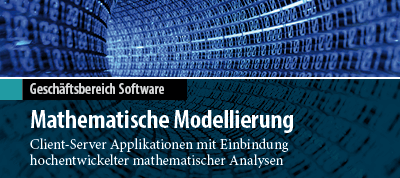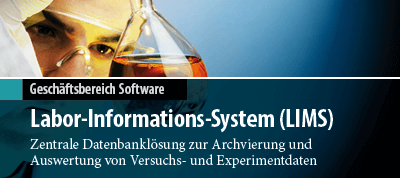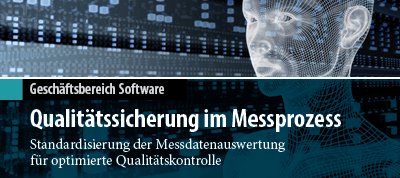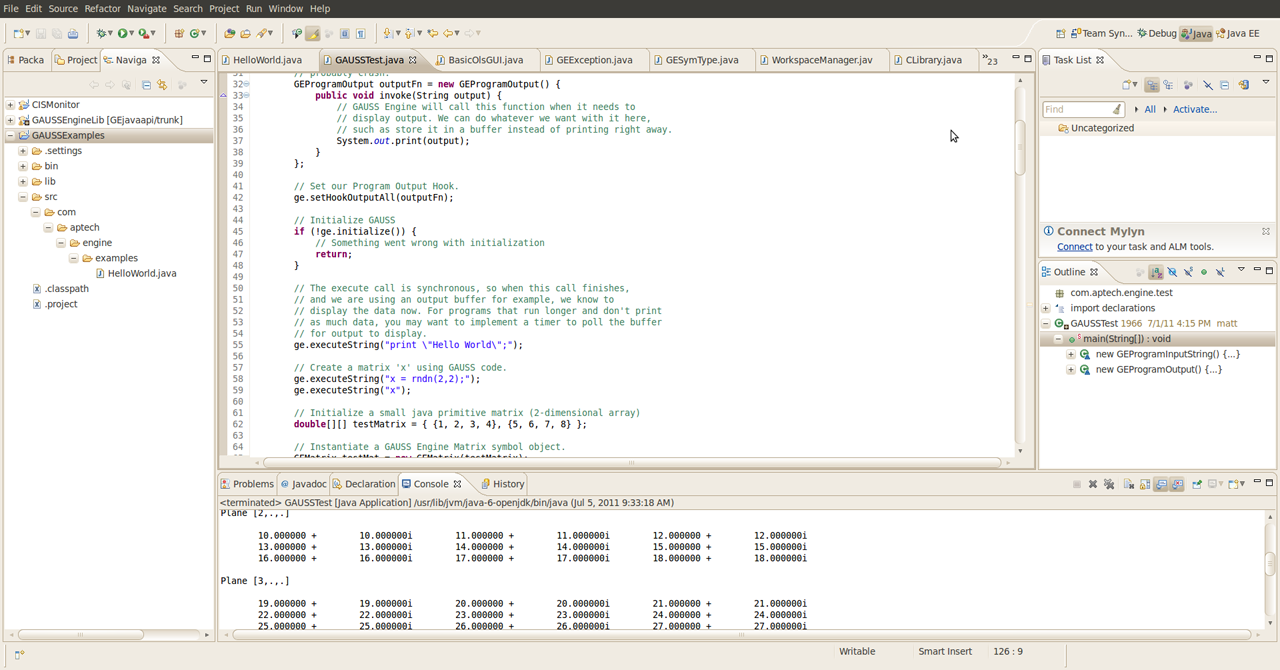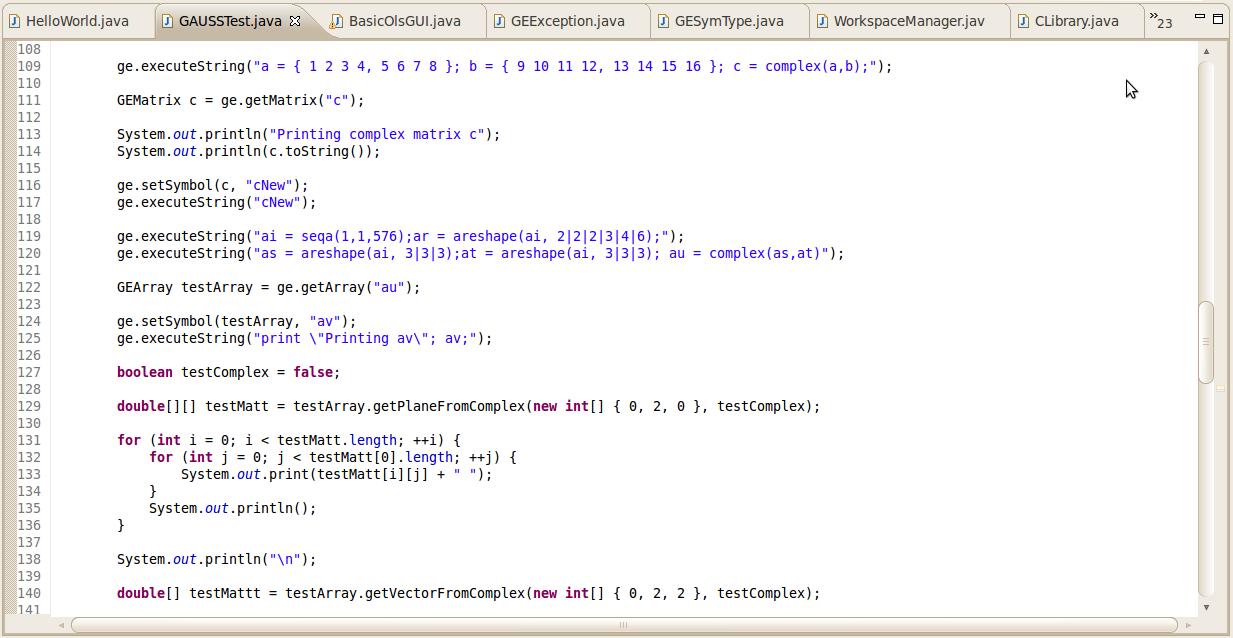JAVA API for the GAUSS Engine
The new Java API for the GAUSS Engine provides seamless integration between Java programs and the GAUSS Engine, allowing rapid development of powerful mathematical and statistical GAUSS programs. This new library can be used in stand-alone desktop applications as well as Java EE web applications. The Java Api needs always the newest Gauss Engine version.
The intuitive, fully object-oriented API allows Java programmers to program in a manner natural to Java. All memory management is efficiently handled internally.
- Manipulate GAUSS symbols as Java objects
- No memory management required
- Up and running in minutes - as easy as dropping in 2 jar files
- Intuitive and easy to use library
|
Java API for the GAUSS Engine within Eclipse IDE |
Test routine: Building a matrix |
Java API and Eclipse
We recommend to use Eclipse as development environment for GAUSS, the GAUSS Engine and the Java API for the GAUSS Engine.
ADDITIVE only provides support for your self-developed applications as part of our ADDITIVE Professional Service.
FAQ
-
Q: How easy will this be to integrate into my application?A: Once the GAUSS Engine is installed, it is only a matter of dropping in 2 jar files and a few lines of code to get it up and running.
-
Q: The C API uses structs to represent GAUSS data structures. How does this work in the Java API?A: The Java API includes classes that represent each of GAUSS's native data structures and easy get/set methods for manipulating the data.
-
Q: Does the Java API allow the use of multiple threads?A: Yes, you can use multi-threaded programs to interact with the GAUSS Engine using the Java API.
-
Q: Can I use this in a Java web application run by Tomcat, for example?A: Absolutely! There is nothing in the Java API that would restrict it's usage in a web application environment.
-
Q: Is the Java API slower than the C API?A: While there is minimal overhead in interfacing between Java and C, there should be no performance decrease as all mathematical functions occur in the C layer, and thus are all executed natively!
-
Q: In C, there was nothing that allowed me to easily access the underlying data of a GAUSS symbol. Is it the same for the Java API?A: No knowledge of the underlying data types is necessary, as convenience methods are provided for every data type!
-
Q: Since this product uses JNA to interface with the C-layer of the GAUSS Engine, do I have to know any JNA or JNI?A: No, all JNA functionality has been abstracted and no knowledge is required to perform any function within the Java library.
-
Q: Will I have to try and think like a C programmer or deal with memory management?A: No, this library is designed to be natural and intuitive for Java programmers. All memory management aspects have been abstracted from the end-user, and anything that is not handled internally by the Java library is picked up by the JVM's garbage collection.








